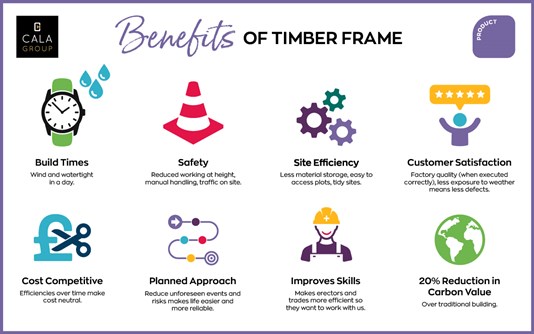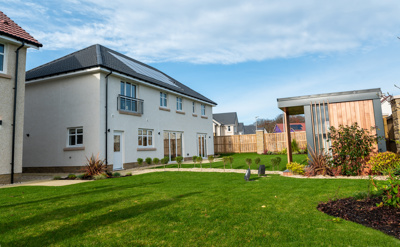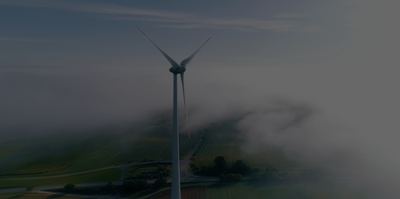Steve Rule, Cala Group Design & Technical Director, shares his thoughts on the role of timber frame in our sustainable future.
Cala’s commitment to sustainability remains at the forefront, empowering us as a team to make an impact through our Sustainability Strategy. We are already making headway towards the ambitious targets that we have set ourselves, in turn meeting the targets set out by both the Scottish and UK Governments to mitigate the impact our industry has on the planet and ensure we are in a full Net Zero Carbon position by 2045 and 2050 respectively.
Everyone across the business are responsible for setting out how we achieve this – from brainstorming new operational and community initiatives through our Green Teams, to researching and trialling new technological innovations through our Working Groups.
Looking at improvements to the product and technology we already have is also a major part of the process, and one key area we are forging ahead with is examining the very fabric of the homes we build.
All new homes must have low carbon heating and be 'zero carbon ready' by 2025. Whilst further clarification is still required, it is likely that a reduction in carbon emissions, improved air-tightness requirements, and the retention of the Fabric Energy Efficiency Standard will all be required in order to meet the targets.
This means that our industry is increasingly looking to utilise greener technologies and materials, such as timber, to help drive down our carbon footprint.
Timber frame has long been recognised in providing a number of key advantages - design flexibility, speed of construction, including the ability to start internal trade activity before brickwork is completed, and its benefits in building performance such as thermal efficiency.

It is for these reasons that timber frame is already the primary method of housebuilding across the globe, including USA, Canada, Europe, Australia, New Zealand and Japan. In Scotland alone, timber frame already accounts for over 90% of all new build housing, and indeed timber frame is used throughout our portfolio in Scotland, which accounts for 40% of the homes we build.
The timber that is used in construction across Europe is sourced from purpose grown trees in managed woodlands, and whilst the supply of timber is already readily available, the renewability of the material is the key feature. Typically for every tree cut down, three or four more are replanted within well managed timber production woodlands - ensuring large scale reforestation and further aiding in the fight against climate change.
The critical benefit of using timber in construction is carbon capture. As trees grow and capture carbon in the air, known as sequestration, it turns into oxygen. The sequestered carbon is retained in the timber throughout its life as a structural building material, and even beyond if recycled.
Timber frame build systems have also been shown to have up to 20% less embodied carbon than a typical masonry build, which is key to achieving a reduction in embodied carbon as well as helping to reduce the carbon from the use of the building.
Embracing sustainable construction methods such as timber is not an overnight process, however over recent years the uptake has rapidly increased across England and Wales. Developers are now seeking a high-quality offsite solution that helps them enjoy both the construction benefits noted above, but also provides a sustainable answer to the ever-growing carbon challenge that faces us all.
Now, we are determined to significantly increase our use of timber frame as part of our Sustainability Strategy. Utilising timber across our developments will not only provide benefits to our customers, such as improving the thermal performance of their homes, but will demonstrate our commitment to making significant changes in how we operate in order to tackle the climate crisis.
Reducing carbon through our design and construction activities is crucial, and this will be a major step forward. Having our housing portfolio designed in timber frame to accompany our traditional range in England will advance a key part of our strategy, helping to ensure we are ready for the future and that Cala is playing an active role within the green revolution.
Read more about Cala’s Sustainability Strategy: www.cala.co.uk/sustainability





